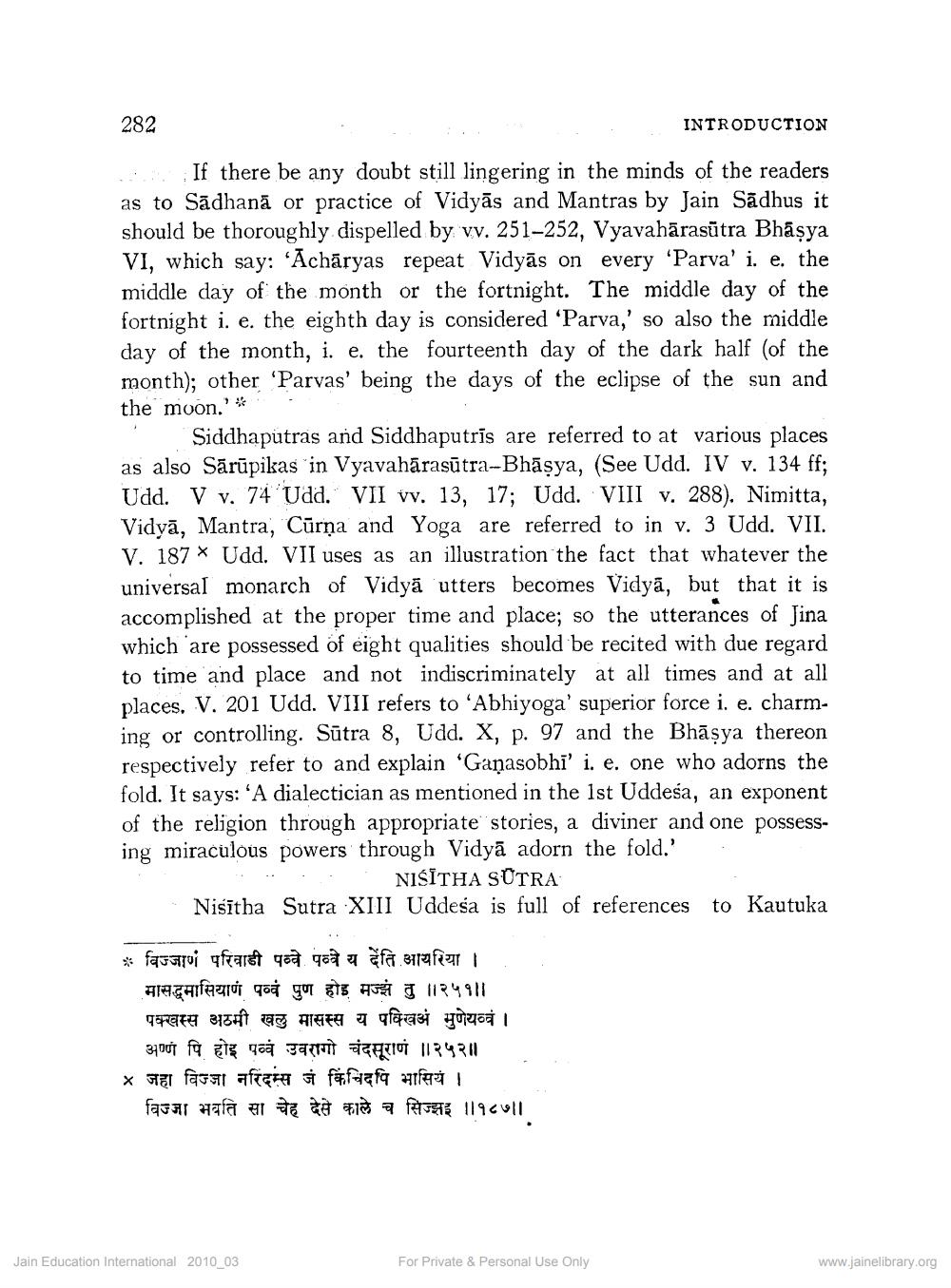________________
282
INTRODUCTION
If there be any doubt still lingering in the minds of the readers as to Sadhanā or practice of Vidyās and Mantras by Jain Sadhus it should be thoroughly dispelled by vy. 251-252, Vyavahārasūtra Bhāşya VI, which say: 'Achāryas repeat Vidyās on every 'Parva' i. e. the middle day of the month or the fortnight. The middle day of the fortnight i. e. the eighth day is considered 'Parva,' so also the middle day of the month, i. e. the fourteenth day of the dark half (of the month); other 'Parvas' being the days of the eclipse of the sun and the moon.' * .
Siddhaputras and Siddhaputrīs are referred to at various places as also Sārūpikas in Vyavahārasūtra-Bhāsya, (See Udd. IV v. 134 ff; Udd. V v. 74 Udd. VII vv. 13, 17; Udd. VIII v. 288). Nimitta, Vidyā, Mantra, Cūrņa and Yoga are referred to in v. 3 Udd. VII V. 187 * Udd. VII uses as an illustration the fact that whatever the universal monarch of Vidyā utters becomes Vidyā, but that it is accomplished at the proper time and place; so the utterances of Jina which are possessed of eight qualities should be recited with due regard to time and place and not indiscriminately at all times and at all places. V. 201 Udd. VIII refers to 'Abhiyoga' superior force i. e. charming or controlling. Sūtra 8, Udd. X, p. 97 and the Bhāşya thereon respectively refer to and explain 'Gaņasobhi' i. e. one who adorns the fold. It says: 'A dialectician as mentioned in the 1st Uddeśa, an exponent of the religion through appropriate stories, a diviner and one possessing miraculous powers through Vidyā adorn the fold.' .
NIŚĪTHA SUTRA Nisītha Sutra XIII Uddesa is full of references to Kautuka
* विज्जाणं परिवाडी पव्वे पव्वे य देंति आयरिया । मासद्धमासियाणं पव्वं पुण होइ मज्झं तु ॥२५१॥ पक्खस्स अठमी खलु मासस्स य पक्खिअं मुणेयव्वं ।
अण्ण पि होइ पव्वं उवरागो चंदसूराणं ॥२५२॥ - जहा विज्जा नरिदम्स जं किंचिदपि भासियं । विज्जा भवति सा चेह देसे काले च सिज्झइ ||१८७।।
Jain Education International 2010_03
For Private & Personal Use Only
www.jainelibrary.org




